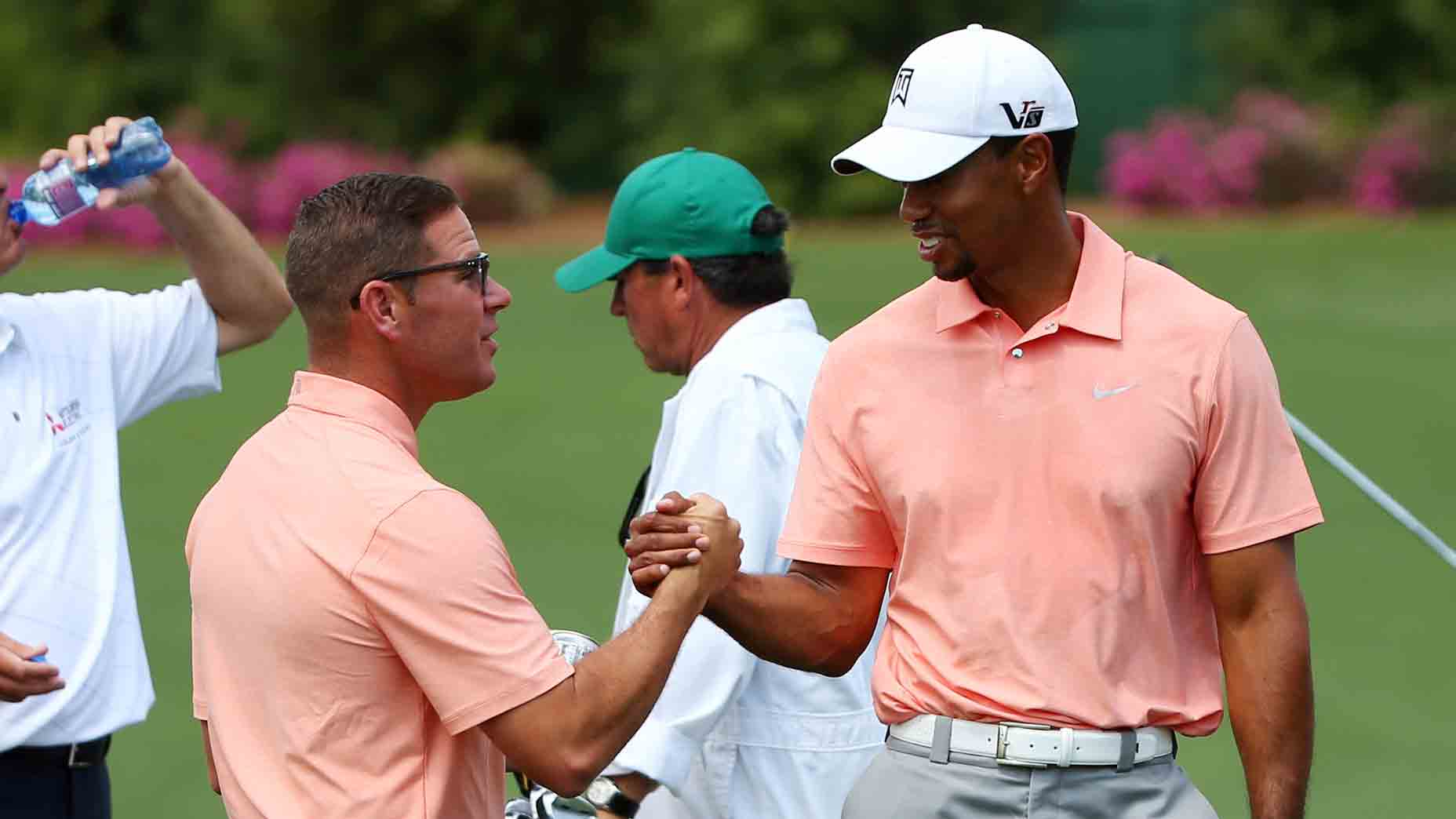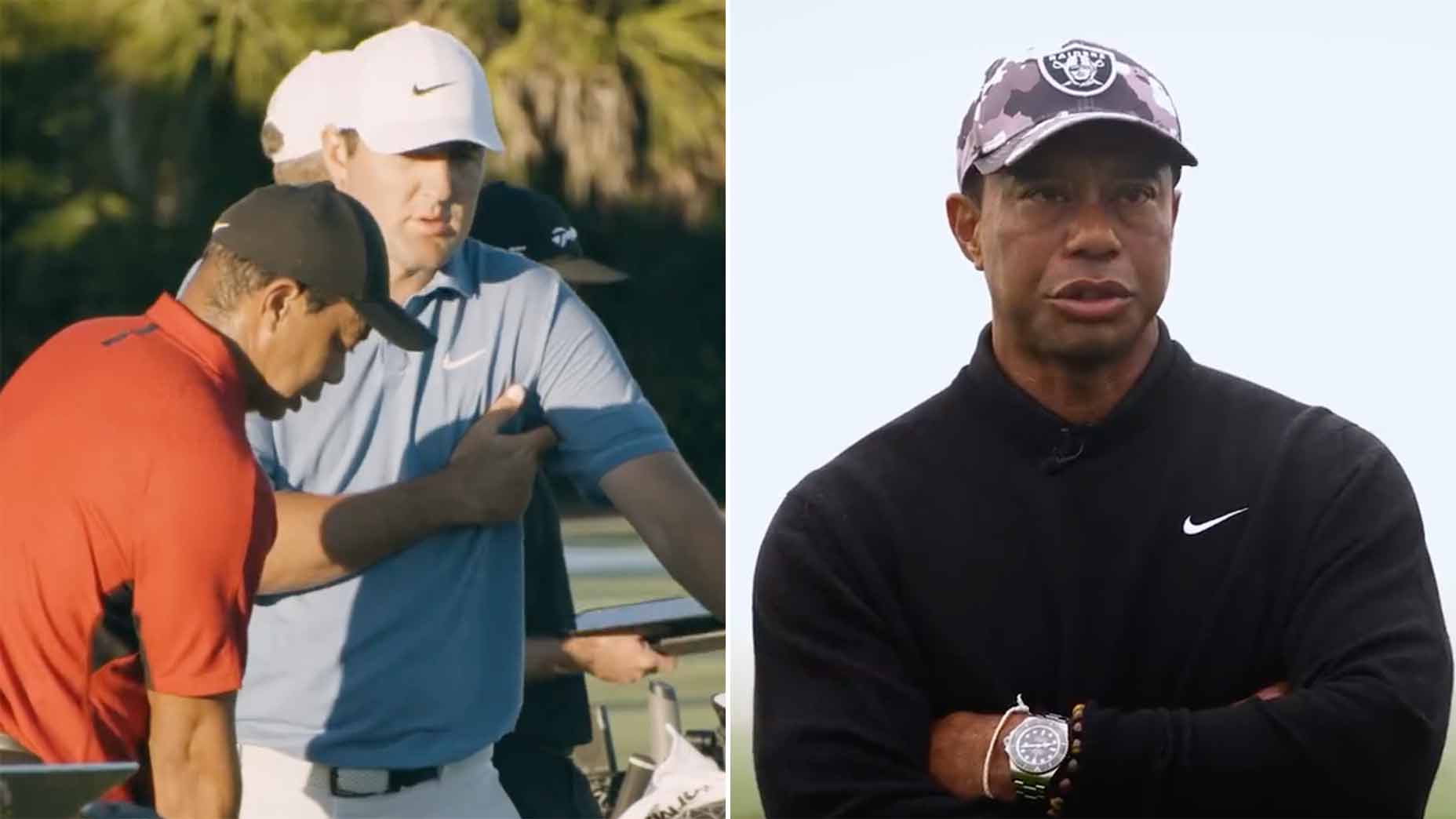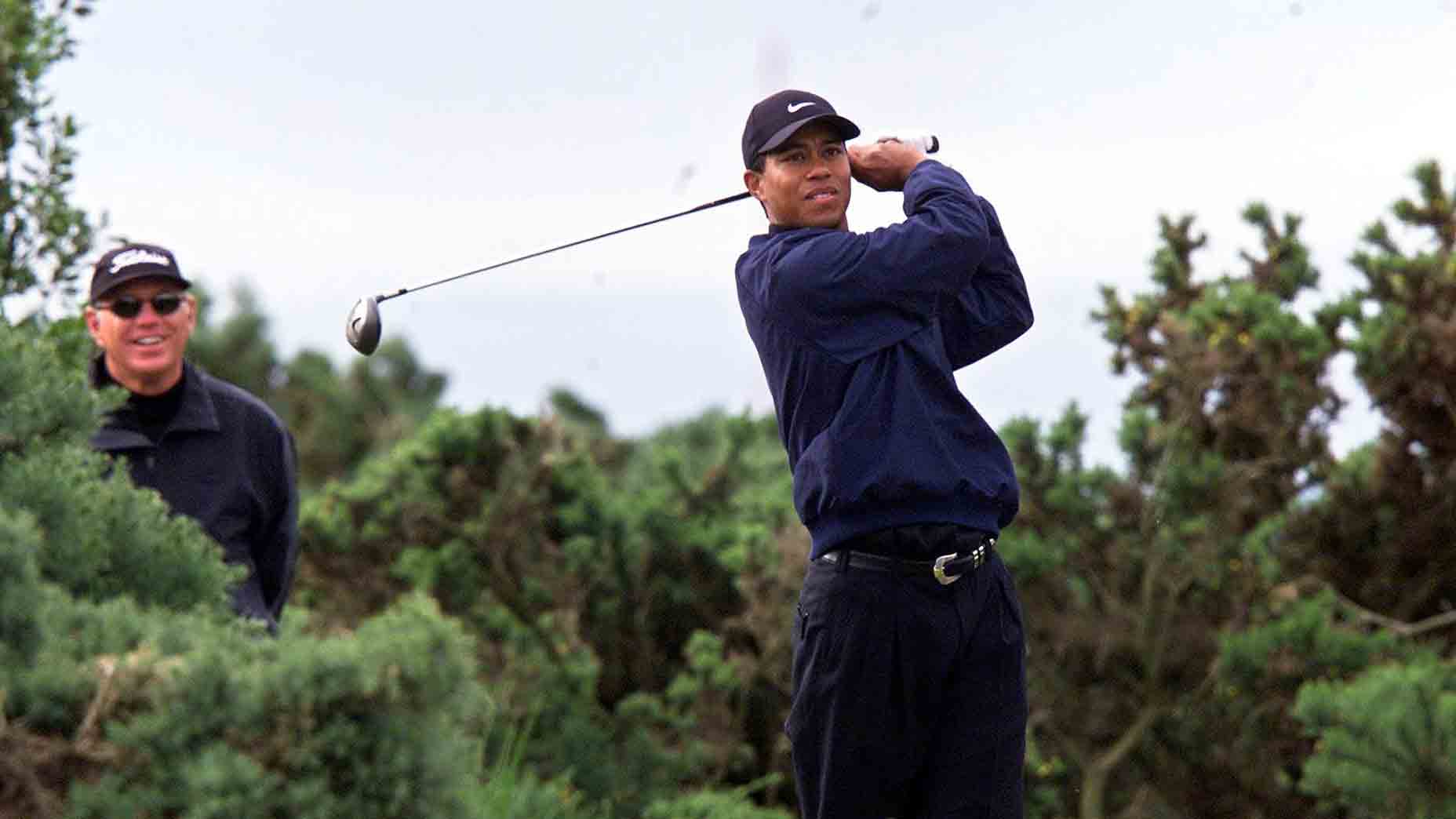Tiger Woods is a human being, Sean Foley says.
“An ordinary guy who did extraordinary things,” he adds.
Foley would know.
He was talking on the latest No Laying Up podcast, which you can — and should — listen to in full here. And a question from host Chris Solomon was whether Woods’ one-time coach had ever seen moments from the 15-time major winner that surprised him. Were there moments where he was “vulnerable?” And of course, there were.
Woods is human.
And he’s Woods.
And we can be curious about our stars whom we see and hear often, but don’t really know. What’s a phenom like when they’re not being phenomenal? When they have *our* highs and lows? Foley, who worked with Woods from 2010 to 2014, shared some of it on the podcast.
The back-and-forth was good.
“I’m curious,” Solomon started on the podcast, “you said you got to see up close just kind of what his life is like and what that kind of fame level is. Anything that sticks out, in terms of moments where you were like, wow, I don’t think I really realized that? Or moments you thought he was especially vulnerable due to just kind of reaction to things and how he was taking everything that was going on at the moment in his life?”
“Yeah, I mean, he was always very vulnerable with his kids,” Foley said. “Very vulnerable about his foundation. He would give every year at his tournament, he would give a speech about — a kid would come up and they would highlight this kid and what this kid has done and where he came from, and T-dubs couldn’t get through one of those speeches without crying. He’s a human being, man. He’s an ordinary guy who did extraordinary things.
Tiger Woods is in ‘go-mode,’ major winner says. Could return be near?By: Nick Piastowski
“I think that he had to alter himself a little bit to put this wall around him. You know, a lot of people did him wrong. And so love is something I give everyone. But trust is something that you really have to earn from me. And I think that’s good for everyone to understand that. People give trust before they give love. I’m going to give love because you’re just a human being like me and we’re probably doing our best from what we understand to be our best and I’m OK with that. But trust is a different thing.
“So I remember when we first started, like right around that time, that’s when Hank Haney wrote the book, The Big Miss [about Woods]. Now I’m the next guy, and I’m just standing there on the range, going like, holy s**t, this is f***ing tricky right now. Like, oh my god. You know, being on the range and watching helicopters fly over and film us and stuff. Justin Rose and Sean O’Hair and Hunter Mahan [former Foley students] are pretty well known, but we got to a Prince-Michael Jackson level, you know. I would imagine 99 out of 100 people in the world who have never touched a golf club or even been on a golf course still know who Tiger Woods is, right.”
Here, Solomon wondered about what that was like for Foley himself.
“Well, there’s no book,” he said on the podcast. “There’s nothing you can read on it. People’s advice doesn’t help. You just got to find your way to do it. And for me, I was never going to let it change me. I’ve always been very social, very talkative. I have time for anybody, regardless of whether you’re the CEO of an organization or you’re a janitor in the same building; that doesn’t matter to me. There were the fans of what we were doing and the people who hated it, so I would run into both of them in the airport.
“But look, I was the one who said yes to doing it. And so basically because I chose to do it, I’m responsible for whatever occurred after that. It all comes down to me.”
Then there is that technical side.
Tiger Woods explains viral ‘no-divots’ video. Here’s what he meantBy: Zephyr Melton
On the podcast, Foley talked of what they worked on. “Basically we went to like this little baby cut off the tee and really focused on the iron play from 170 to 200 yards.”
Which tied in to another notable question from Solomon:
How exactly does a coach coach Woods? When the two connected, he had won 14 of his majors.
Foley’s answer was lengthy.
“Like I said, it was a different time, for sure, 100 percent,” he said on the podcast. “Ultimately, if it was today, I would have went back to an 18-year-old Tiger Woods with some slight upgrades. So the reason how I was able to not make that mistake again, was that when I started with Lydia Ko, I went directly back to her DNA and then just put upgrades on it.
“So the thing about human movement is the one that we’ve made the most, we wrap the most protein around that neural pathway. So the problem with technically changing your swing is that old swing you have is never going away. It’s wired. It’s completely in there. What happens is you can make a new pattern that’s got its own wiring. But when push comes to shove, the brain is going to pick the neural pathway that it can transfer thought down the fastest. I think it would have been more along those lines, just whether or not with four knee surgeries and an Achilles surgery if he could have done that anyways.
“I’ve been probably one of Tiger’s biggest fans ever and to be able to spend time with him like that and to get to know him and to just see the sheer difficulty of his life, that type of fame, that type of notoriety — you wouldn’t wish it on anybody. The game of golf, especially the PGA Tour, they owe that guy everything because purses are not here today because of the business development aspects of the PGA Tour; it’s all due to a Black kid in a red shirt from Orange County, California. And I think if anyone would not admit that, they’re obviously wrong.
“So I think that would be more of it. It would have been just kind of spending enough time with him, maybe asking the right questions and just kind of guiding him to him discovering what it is. And that’s something I feel like I do very well now after that.”
Editor’s note: To listen to the entire No Laying Up podcast with Foley, please click here.












